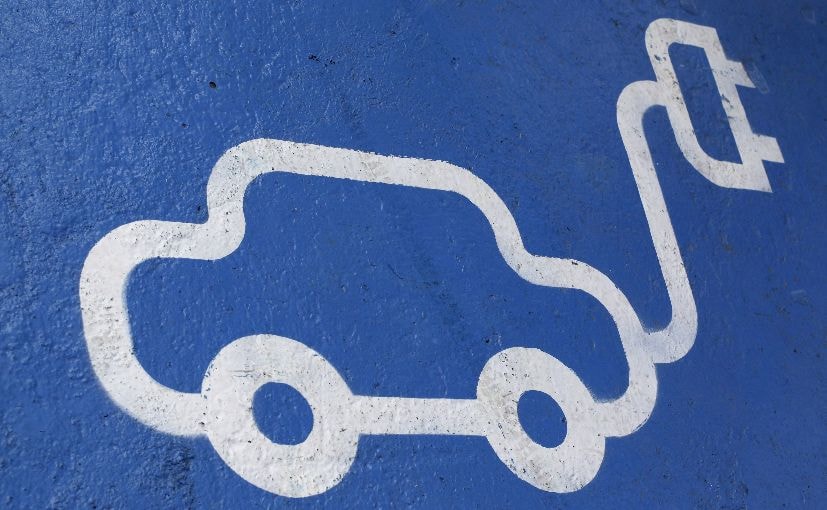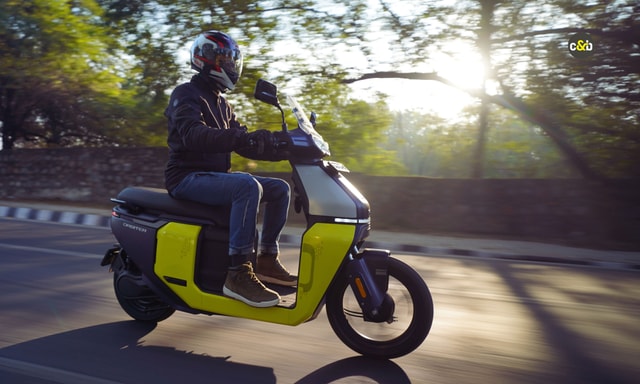IIT Guwahati Researchers Develop New Voltage Control System For Active Power Distribution

IIT Guwahati researchers have developed an optimisation-based voltage control approach for active power distribution which could help increase the use of solar energy for charging EVs. The approach involves the use of coordinated operation of photovoltaic power generation and EV charging stations.
The project was led by Professor Sanjib Ganguly, Associate Professor, the department of electronics and electrical engineering (EEE) at IIT Guwahati. Along with him research scholars Arunima Dutta and Dr Chandan Kumar also worked on the project and published their research in the Journal of Sustainable Energy, Grids and Networks.
One of the biggest question marks around EVs is the source of the charging source. Often EVs are often charged using electricity from the grid that is still energised by coal. The challenge around solar energy is intermittent which leads to fluctuation problems in the power distribution networks. Currently, when EVs are charged using uncoordinated systems they cause under voltage of distribution networks and result in efficiency loss. In other words, solar power is not maximised.
This coordinated control approach for power destruction will help renewable sources of power generation be more pervasive for charging electric cars. PV and EV inverters need to work in coordination with other voltage regulation devices to regulate the system voltage.
“We have developed an optimization-based coordinated voltage control approach of power distribution networks to mitigate the overvoltage and under-voltage problems due to high PV generation and high EV charging, respectively,” said Dr Ganguly.
The research team has also developed a three-stage model predictive control system to schedule of EVs and other devices.
“Our three-stage model helps in maintaining bus voltage magnitudes and state-of-charge (SOC) of EV battery within safe limits with minimal usage of control resources and cost of electricity consumption,” added Dr Ganguly.
This approach also allows the transition from passive power distribution to active. Both solar power generation and EVs can enable the transition of power distribution from a passive state to an active system enabling the bidirectional flow of power from the grid to the point of use from the battery of the electric car.
Latest News
 car&bike Team | Jan 4, 2026Auto Sales December 2025: Mahindra Edges Out Tata To No. 2, Hyundai Drops To Fourth In Domestic SalesMaruti Suzuki remained firmly in the lead with domestic sales north of 1.7 lakh units - a 37 per cent sales growth year-on-year.1 min read
car&bike Team | Jan 4, 2026Auto Sales December 2025: Mahindra Edges Out Tata To No. 2, Hyundai Drops To Fourth In Domestic SalesMaruti Suzuki remained firmly in the lead with domestic sales north of 1.7 lakh units - a 37 per cent sales growth year-on-year.1 min read Jaiveer Mehra | Jan 4, 2026Tata Punch Facelift To Get Turbo-Petrol Engine OptionNew teaser confirms big change in powertrain line-up for the Punch micro SUV.4 mins read
Jaiveer Mehra | Jan 4, 2026Tata Punch Facelift To Get Turbo-Petrol Engine OptionNew teaser confirms big change in powertrain line-up for the Punch micro SUV.4 mins read Jaiveer Mehra | Jan 4, 2026Mahindra XUV 7XO India Launch Tomorrow: Here’s What We Know So FarThe facelift to the popular XUV 700, the 7XO will arrive with notable design and tech updates, though engine options are expected to stay unchanged.1 min read
Jaiveer Mehra | Jan 4, 2026Mahindra XUV 7XO India Launch Tomorrow: Here’s What We Know So FarThe facelift to the popular XUV 700, the 7XO will arrive with notable design and tech updates, though engine options are expected to stay unchanged.1 min read car&bike Team | Jan 3, 2026New Bajaj Chetak Spotted Ahead Of LaunchFresh images of the new Chetak continue to showcase a hub-mounted electric motor among other changes.2 mins read
car&bike Team | Jan 3, 2026New Bajaj Chetak Spotted Ahead Of LaunchFresh images of the new Chetak continue to showcase a hub-mounted electric motor among other changes.2 mins read car&bike Team | Jan 3, 2026Tata Punch Facelift Teased Ahead Of Launch On January 13The teaser images focus solely on the exterior, marking the first substantial update for the Punch since it was introduced in 2021.2 mins read
car&bike Team | Jan 3, 2026Tata Punch Facelift Teased Ahead Of Launch On January 13The teaser images focus solely on the exterior, marking the first substantial update for the Punch since it was introduced in 2021.2 mins read Jafar Rizvi | Jan 3, 20262026 Kia Seltos: Variants, Features, Prices ExplainedThe new Seltos is offered in 10 variants and three engine options. Here is a rundown of what each variant has to offer, along with its price, engine and transmission choices, respectively.5 mins read
Jafar Rizvi | Jan 3, 20262026 Kia Seltos: Variants, Features, Prices ExplainedThe new Seltos is offered in 10 variants and three engine options. Here is a rundown of what each variant has to offer, along with its price, engine and transmission choices, respectively.5 mins read
 Amaan Ahmed | Jan 3, 2026VLF Mobster 135 300 KM Review: Fun But FlawedA 125 cc scooter with Italian design and Chinese genes is a rare combination, and while some may be tempted to dismiss it because of its origins, the VLF Mobster shows 125s can also be exciting – but not without compromises.1 min read
Amaan Ahmed | Jan 3, 2026VLF Mobster 135 300 KM Review: Fun But FlawedA 125 cc scooter with Italian design and Chinese genes is a rare combination, and while some may be tempted to dismiss it because of its origins, the VLF Mobster shows 125s can also be exciting – but not without compromises.1 min read Preetam Bora | Dec 30, 2025TVS Orbiter Review: Real-World Performance and Range TestedThe TVS Orbiter is a promising electric scooter promising decent range, practicality and pricing. But is there any reason to avoid it? We spent a few days getting to know it better.9 mins read
Preetam Bora | Dec 30, 2025TVS Orbiter Review: Real-World Performance and Range TestedThe TVS Orbiter is a promising electric scooter promising decent range, practicality and pricing. But is there any reason to avoid it? We spent a few days getting to know it better.9 mins read Jafar Rizvi | Dec 24, 2025MG Windsor EV 38 kWh Long-Term Report: IntroductionThe Windsor EV has joined our garage, and before it settles into daily duty, I took it out to get a sense of what living with an electric car is like.4 mins read
Jafar Rizvi | Dec 24, 2025MG Windsor EV 38 kWh Long-Term Report: IntroductionThe Windsor EV has joined our garage, and before it settles into daily duty, I took it out to get a sense of what living with an electric car is like.4 mins read Seshan Vijayraghvan | Dec 23, 20252026 Kia Seltos Review: Formula Is Spot On, But Is The Timing Right?The 2nd-gen Kia Seltos has arrived, but it has the challenge of facing strong rivals like the Victoris and Sierra. The question is simple - Does it still have what it takes?9 mins read
Seshan Vijayraghvan | Dec 23, 20252026 Kia Seltos Review: Formula Is Spot On, But Is The Timing Right?The 2nd-gen Kia Seltos has arrived, but it has the challenge of facing strong rivals like the Victoris and Sierra. The question is simple - Does it still have what it takes?9 mins read car&bike Team | Dec 26, 2025Tata Punch EV Long-Term Second Report: Highway Performance, Pros & ConsAfter a week of living with the Tata Punch EV Long Range—including a proper Mumbai-Nashik highway test—we've learned what this little electric SUV is really made of.1 min read
car&bike Team | Dec 26, 2025Tata Punch EV Long-Term Second Report: Highway Performance, Pros & ConsAfter a week of living with the Tata Punch EV Long Range—including a proper Mumbai-Nashik highway test—we've learned what this little electric SUV is really made of.1 min read
























































































































